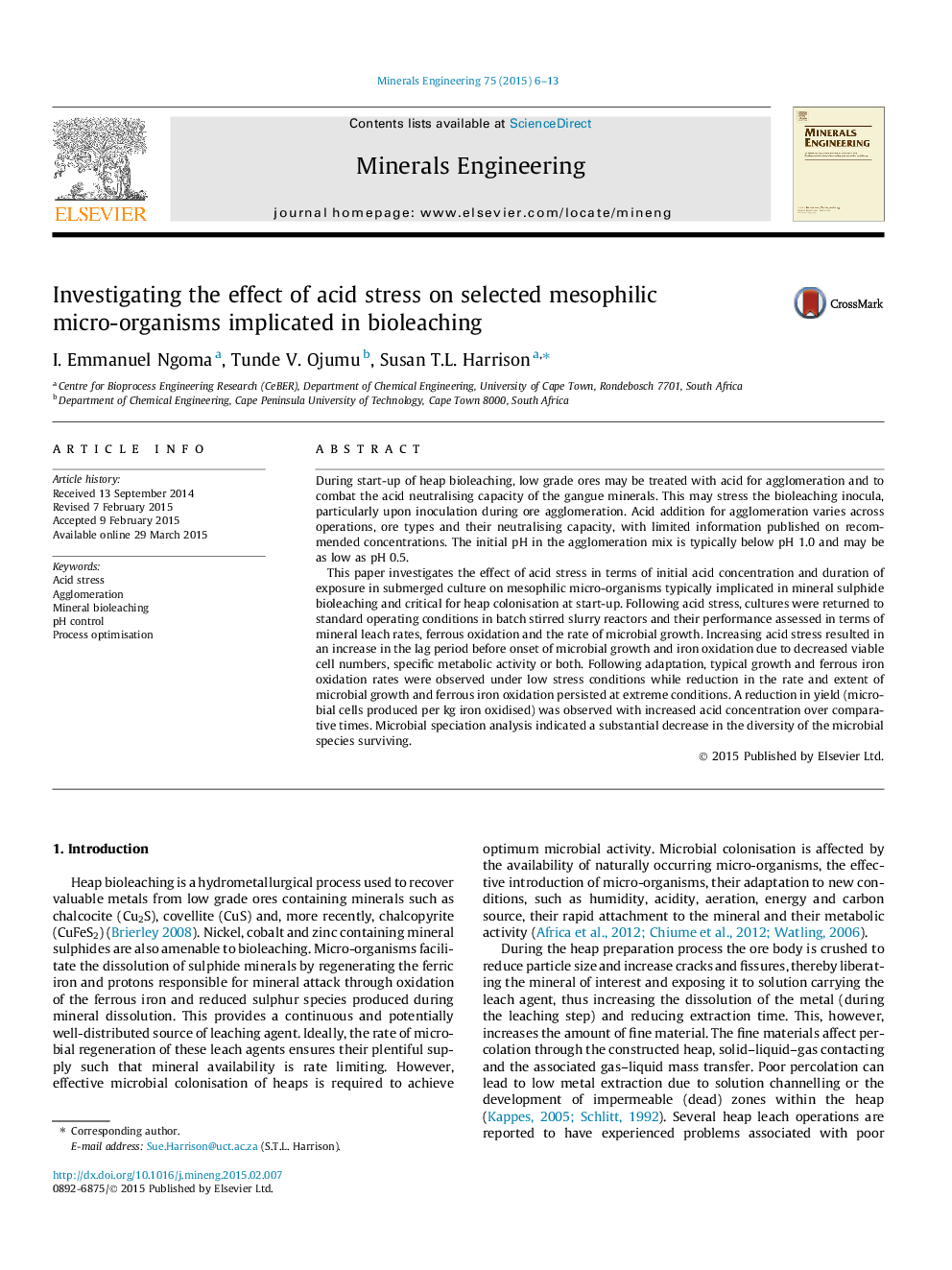| کد مقاله | کد نشریه | سال انتشار | مقاله انگلیسی | نسخه تمام متن |
|---|---|---|---|---|
| 232966 | 465315 | 2015 | 8 صفحه PDF | دانلود رایگان |
• Exposing biomining microbes to high acidity delayed growth and metabolic activity.
• Following an extended lag period, effective bioleaching was re-established.
• Following recovery, little impact was seen on growth rate and iron oxidation rate.
• Leptospirillum ferriphilum was the microbe most resilient to the acid conditions.
During start-up of heap bioleaching, low grade ores may be treated with acid for agglomeration and to combat the acid neutralising capacity of the gangue minerals. This may stress the bioleaching inocula, particularly upon inoculation during ore agglomeration. Acid addition for agglomeration varies across operations, ore types and their neutralising capacity, with limited information published on recommended concentrations. The initial pH in the agglomeration mix is typically below pH 1.0 and may be as low as pH 0.5.This paper investigates the effect of acid stress in terms of initial acid concentration and duration of exposure in submerged culture on mesophilic micro-organisms typically implicated in mineral sulphide bioleaching and critical for heap colonisation at start-up. Following acid stress, cultures were returned to standard operating conditions in batch stirred slurry reactors and their performance assessed in terms of mineral leach rates, ferrous oxidation and the rate of microbial growth. Increasing acid stress resulted in an increase in the lag period before onset of microbial growth and iron oxidation due to decreased viable cell numbers, specific metabolic activity or both. Following adaptation, typical growth and ferrous iron oxidation rates were observed under low stress conditions while reduction in the rate and extent of microbial growth and ferrous iron oxidation persisted at extreme conditions. A reduction in yield (microbial cells produced per kg iron oxidised) was observed with increased acid concentration over comparative times. Microbial speciation analysis indicated a substantial decrease in the diversity of the microbial species surviving.
Figure optionsDownload as PowerPoint slide
Journal: Minerals Engineering - Volume 75, 1 May 2015, Pages 6–13
